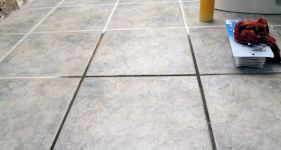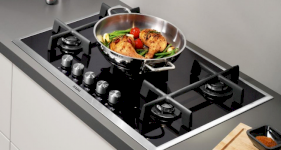Timber Frame Extension Cost
- Average cost for a timber extension is £27,000
- It will take roughly 8 weeks to complete
- A breakdown of pricing information for different types of timber extension
- How long the job will take and a general overview of what the job entails
- Whether you need planning permission
- How to find and hire tradespeople
Want to discover the cost of building a timber frame extension?
This complete guide covers all you need to know about timber frame extension costs, including the cost of an oak frame extension, lean to wooden extension prices and more!
We also have plenty of builders ready to give you a quote for building a timber frame extension.
Need more cost information? Check out the guide below...
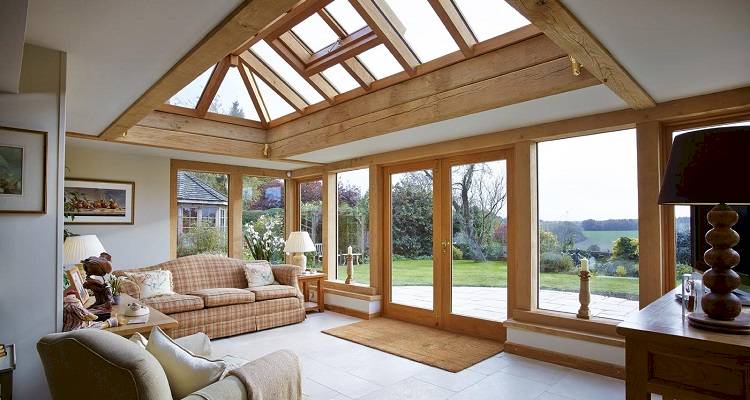
£27,000
Table of Contents
- How Much Does a Timber Frame Extension Cost?
- Timber Framed Extension Prices
- Labour Costs and Timescales
- What's Involved with Building a Timber Frame Extension?
- Who Can Plan my Timber Frame Extension?
- DIY Timber Frame Extension
- Timber-Framed Extensions VS Brick Extensions
- Planning Permission and Building Regulations
- What Fire Protection Regulations Need to be Followed?
- Different Types of Timber Frame Extension
- Hiring a Timber Frame Extension Specialist Checklist
- FAQs
- Sources
How Much Does a Timber Frame Extension Cost?
On average in the UK, the cost of planning and constructing a timber-framed extension ranges between £1,400-£2,400 per square metre. However, it is essential to recognise that many factors will contribute to determining the overall cost.
These cost affecting factors include the finish of your extension, the size and complexity of the extension and the quality of the materials used to construct your extension.
We're thinking of using a timber frame kit for our extension and leaving some of the wood exposed inside. However, I'm worried about fire safety as it'll house part of our kitchen. Are there any building regs etc to be aware of or things we should do to make it fire safe?
Many advantages make timber-framed extensions so popular amongst homeowners, the first being the overall construction time. Compared to using bricks, which is commonly the default method of building home extensions, timber frame extensions are often much quicker to construct.
Timber frame extensions are also less likely to be affected by the weather, which means that you will be able to get your build to a weather-tight phase much quicker than alternative methods of construction. Not only does this process save you time, but it will likely be much cheaper than alternative building methods as your contractors hourly, or daily labour rates will be reduced.
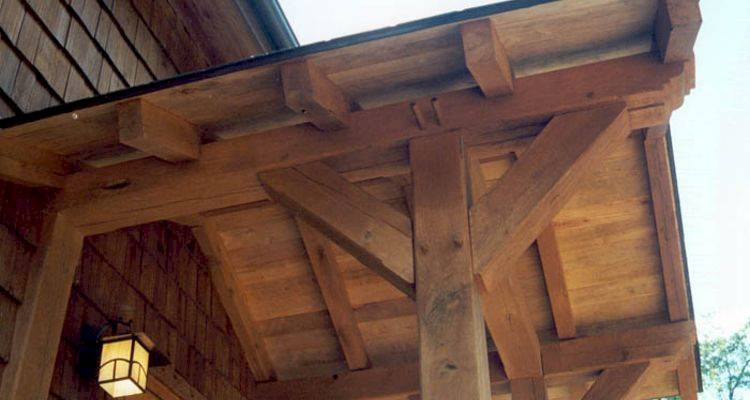
When planning your new timber frame extension, you should consider the desired look and finish you wish to have. There are many different types of timbers that can be used when building a timber-framed extension. Some of the most common are red oak, white oak, cedar and pine. The species of wood that you use will determine the overall quality and cost of your timber frame extension.
It would be best if you always discussed with your contractors which species of wood they suggest would be better suited to your project, as the cheapest choice isn't always the right one. Lower priced timbers can sometimes lose their structural support over time, making them unsuitable for a timber extension.
Another cost affecting factor that you will need to consider when planning your new extension is what type of exterior finish you would like. Some of the most common exteriors finished used with timber-framed extensions include rendered boards, red brickwork, brick slips, metal cladding and timber cladding.
Each of these materials will vary in price, adding to the overall cost of your project. They will also determine the final aesthetic result and quality of your extension.
Timber Framed Extension Prices
As we briefly covered previously, there are many cost-affecting factors to consider when calculating the overall price of building a timber frame extension. Please note that the costs in this table are estimated and should be used as a rough guide only.
| Extension Size | Timber Used | Price Per M2 | Cost |
|---|---|---|---|
| 15m² Single Story Extension | Pine Timber | £1,400-£1,800 | £21,000-£27,000 |
| 30m² Single Story Extension | Pine Timber | £1,400-£1,800 | £42,000-£54,000 |
| 15m² Single Story Extension | Maple Timber | £1,600-£2,000 | £24,00-£30,000 |
| 30m² Single Story Extension | Maple Timber | £1,600-£2,000 | £48,000-£60,000 |
| 15m² Single Story Extension | White Oak Timber | £1,800-£2,200 | £27,000-£33,000 |
| 30m² Single Story Extension | White Oak Timber | £1,800-£2,200 | £54,000-£66,000 |
| 15m² Single Story Extension | Red Oak Timber | £2,000-£2,400 | £30,000-£36,000 |
| 30m² Single Story Extension | Red Oak Timber | £2,000-£2,400 | £60,000-£72,000 |
Labour Costs and Timescales
To build and complete a timber-framed extension, you’ll need to hire a variety of different labourers. The table below will give you an idea of how much you can expect to pay different tradespeople.
| Type of Labourer | Avg. Cost per Day |
|---|---|
| Builder | £140-£300 |
| Plumber | £130-£250 |
| Joiner | £120-£180 |
| Electrician | £120-£350 |
| Plasterer | £100-£170 |
| Roofer | £140-£250 |
| Painter & Decorator | £100-£200 |
Time scales for a timber frame extension are never accurate, due to numerous unforeseen circumstances that can occur. A small extension (15m²) can take between 6-8 weeks, a medium extension (30m²) will take 10-12 weeks, and a large extension (60m²) can take 12-14 weeks or longer.
What's Involved with Building a Timber Frame Extension?
Start by comparing multiple tradespeople and contractors in your local area, reviewing previous work and ensuring they are qualified for the job. Your chosen building specialist will visit you to assess the scale and complexity of your project.
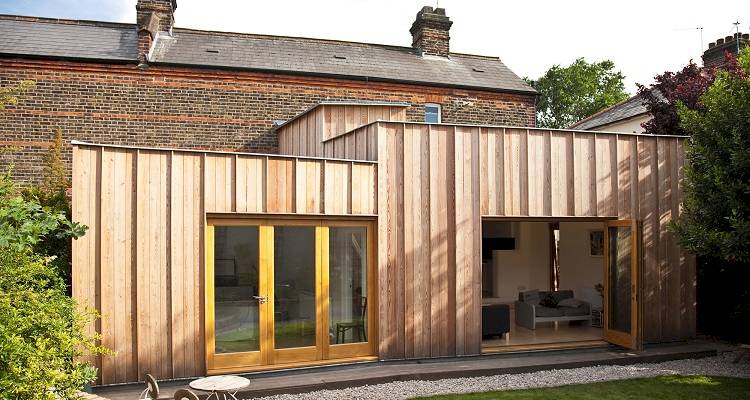
You will also need to source a qualified architect or designer to sketch up the first plans so that you can get an idea of how your finished extension will look. After you have contacted a reliable architect to construct the initial plans, you will need to obtain the correct building consent from your local authorities.
If your extension exceeds the criteria set by your local authority, then you will need to apply for planning permission before commencing any construction work.
You should discuss with the building firm that you have chosen, the different options that are available to you when creating your new timber frame extension. Ask about the advantages and disadvantages of each material and enquire how this would affect your final project cost.
Think about how many stories your extension will cover. Remember that this is also going to increase your final project cost significantly. You and your contractor should talk about the exterior finish you are aiming to achieve and what material would be most suitable for your project.
Once you have all of the plans and regulations in place, the physical construction work can commence. Your team of specialist contractors will begin working on the ground of your property to develop a structural foundation in which your extension will sit.
Generally, the foundations or as they are commonly referred to as footings, are made out of concrete or stone, to give the timber frame of the building support. Depending on the contractor you hire, your timber frame extension can either be constructed on-site, at your property or off-site in a workshop.
The skeleton or frame of the extension can generally be built using soft or hardwood panels, which increases the ease and efficiency of the construction time.
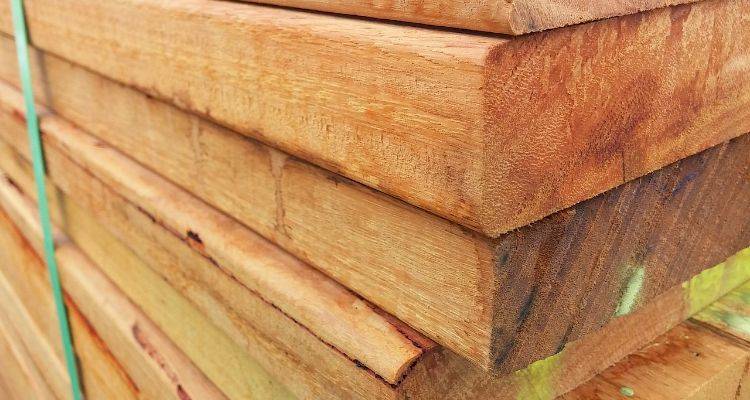
Your timber frame will be assembled by the skilled professionals you have hired, along with any insulating timber boards or panels. The main advantage of using timber to construct any building work is the efficiency and speed of the construction phase. It is much easier for your builders to progress your build to a water-tight, weatherproof state opposes to using alternative building methods.
Once the framework of your extension is securely in place and water-tight, work can commence on the interior and exterior proportion of your build. This is where any windows, doors, cavities and exterior finishes can be installed along with roofing and roof guttering systems.
If you have agreed to, then your building firm will begin working on the interior of your extension, such as the electrical wiring, plastering and decorating.
Who Can Plan my Timber Frame Extension?
Before we begin this section, it is important to recognise that in the UK, there is currently no law stating that you must have an architect to submit plans for your new extension. However, we always recommend the best possible way for you to make the process run as smoothly as possible and achieve the best quality results.
We will always suggest that whenever you are planning on carrying out extensive building work on your property, you seek the advice and services of skilled professionals who are experienced in this area.
Hiring a qualified architect is by far the best way to achieve a detailed plan and diagram of how you envision your new extension to be. An architect will cover all elements of your build and will be able to advise you on the best possible recommendation and solutions that will benefit your case.
Many architects will often charge on a percentage of the final cost of your extension. Usually, this percentage is between 10-20%. Consider that if your total project cost is £40,000, your architect may charge up to £8,000 for their design service.
Alternatively, there are trading companies that offer similar services for homeowners who are planning a property extension but might not know where to start. These companies provide simple design services either by CAD and 3D models, specialised in the construction of home extensions.
Often, design firms will offer a variety of packages, from partial plan designs to full planning of your extension. Depending on the level of service you require, you may end up paying between £80-£120 per hour for a CAD designer.
DIY Timber Frame Extension
Building a timber frame extension is an extensive renovation project that is best left to the professionals. That being said, there are certain aspects of the project that you can do yourself to help move things along if you feel competent. One advantage of working with timber is that it is much easier and lighter to assemble compared to other methods of building.
You may find that you are able to construct the timber framework yourself, either on-site or off-site, and progress to a stable a water-tight build phase. This will save you both time and money as you will only require the assistance and service of a construction firm for part of the build.
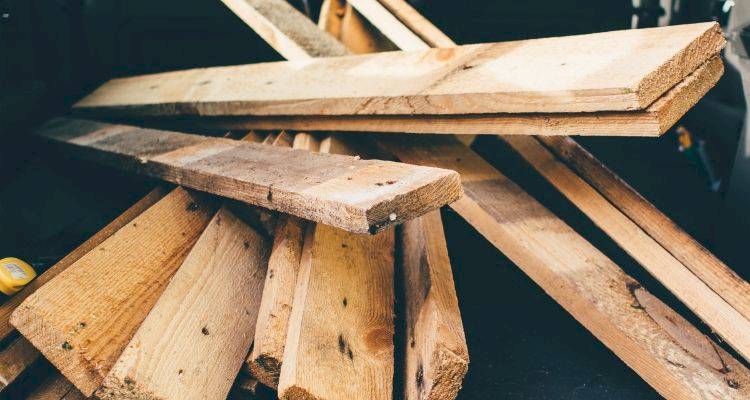
However, if the structural work of your extension is not correctly assembled and stable, your property will be at risk. To assure that you receive the best quality finish, you should always consider speaking to an experienced professional before attempting to carry out the work yourself.
Building any kind of home extension is a huge task, requiring professional skill and materials. Not only that, but the use of power tools can exceptionally be hazardous if used by someone inexperienced or unskilled.
Some of the most common disasters associated with self-builds are issues with the finish, quality and functionality of the final result. Confident DIY-ers will believe that they do not necessarily need to pay for a professional tradespersons service, attempting to carry out the work themselves.
More often than not, they will face issues when trying to follow the architect's designs and plans. Following construction plans and working alongside qualified designers requires a lot of patience, experience and skill, which the average DIY-er often struggles with. The result is a project that lacks a quality finish and potentially breaches building regulations.
Timber-Framed Extensions VS Brick Extensions
In order to decide whether you should opt for a timber frame extension or a brick extension, you must first be aware of the differences between the methods. In terms of the cost, there isn't much difference between using timber or bricks.
When choosing the exterior finishes of your extension, recognise that timber finishes will sit better atop a timber frame and masonry finishes with brick or blockwork structures.
The significant differences between the two processes become apparent when we look at the time frame for the completion of each project. As we mentioned previously, timber frame extensions are much more efficient and faster to install.
Brick and blockwork extensions generally take longer to get to a water-tight phase, as the weather will often interfere with the construction. The weather conditions need to be right when working with bricks and blockwork, or the cement will not set correctly, resulting in a weak and unstable finish.
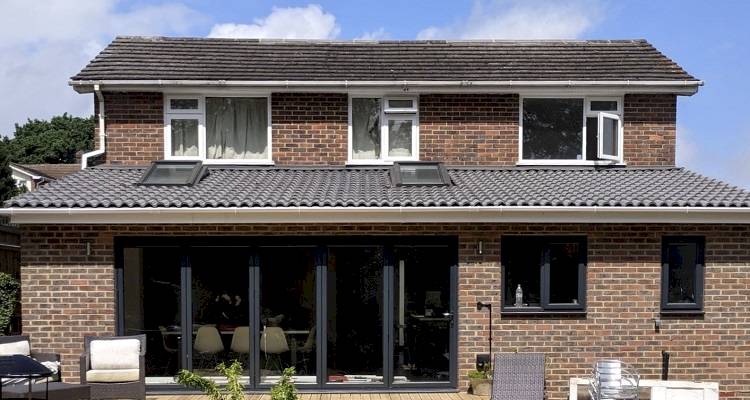
Remember, many construction companies and local tradespeople will charge on an hourly or daily rate for their services. The longer that your project takes to construct, the higher these fees are going to be.
It goes without saying that using the timber frame method to build your new home extension will significantly reduce the labour charges of your traders because the process is much quicker to complete.
In terms of longevity for each method, this can be quite a grey area. Many manufacturers will guarantee that any of their construction timber has a lifespan of up to 40 years. However, you need to consider that wood is an organic material and susceptible to rot and breakage.
Masonry, on the other hand, has a typical lifespan of up to 150 years. Clay bricks, in particular, can exceed this much longer. Discussing these concerns with your chosen construction team will give you a better understanding of which method would work best for you.
An experienced building team will have years of knowledge and information on which process is both durable and efficient to install.
Planning Permission and Building Regulations
Many people often wonder whether they will require planning permission for their timber-framed extension. The answer is, possibly. As we briefly covered earlier, the case will depend on the particular extension plans and design. Your local authority will have guidelines and regulations that need to be followed at all costs.
If your project requires planning permission and you begin the construction without obtaining consent, you will be in breach of your local authorities building regulations. The consequences of building without planning permission may risk your building needed to be demolished.
However, not all projects require planning permission. Usually, a build that does not exceed 4 metres in height and is under half of your property's width does not require consent. To be sure, you should always check your local authorities' regulations for the exact guidelines before erecting your extension.
There are also fees associated with obtaining planning consent that you should take into consideration when budgeting for your project. In the UK, the typical cost of a planning application is £462 for the build of an entire new home, while extensions and garden outbuilding planning is £206.
What Fire Protection Regulations Need to be Followed?
Fire protection regulations are in place for the protection of any occupier in the event of a fire. By following these regulations correctly, there will be a reduced risk of a fire starting in your property and safe evacuation procedures in the case of one.
In previous years, there were several severe fire occurrences during the building and occupancy of a timber-framed build. Therefore, the fire safety regulations act came into existence. Designers and developers must follow these principles when planning and constructing a timber-framed build to comply with the risk management of the development phase.
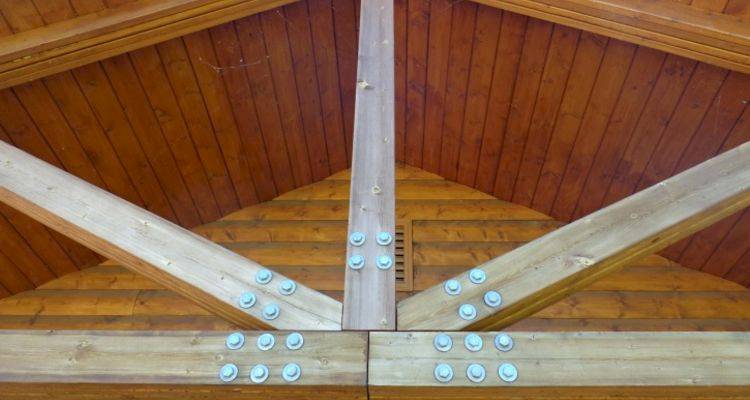
These regulations include using treated timbers in advance of constructing the structural timber-frame for the build, along with installing tested fire-resistant linings to all walls and floors.
Typically, a cavity barrier will be necessary between the internal timber structure and the external cladding material. A cavity barrier is a concealed space that will protect the structure from the penetration of flames and smoke, restricting the movement of the fire from attacking adjacent areas.
Most timber frame walls and floors will require a combination of fire-resistant lining boards along with other protective elements, being fixed to the internal structural framework of the building.
Consider that other appropriate components may also require protection such as insulation materials, air gaps and electrical connections. Your qualified construction team will be able to inform you of the methods that will be installed during your build. However, the best way to educate yourself on the requirements of the fire protection legislation is to contact your local authorities.
Different Types of Timber Frame Extension
There are a few different types of timber frame methods to consider when planning your new extension.
The Platform Frame Method
The platform frame method of building timber frame structures benefits both low-rise and medium-rise raisings. Many buildings up to seven storeys in height have been erected, typically for residential and commercial uses, using the platform frame method.
This method of construction involves floor structures bearing onto load-bearing wall panels, thereby creating a platform for the development of the next level. An advantage of platform framing is that shorter pieces of timber are used. It also creates a stable floor level where contractors can work.
A disadvantage of platform framing is that the horizontal structure of the wood may lead to shrinking on the load-bearing timbers, causing stress on the finished surfaces.
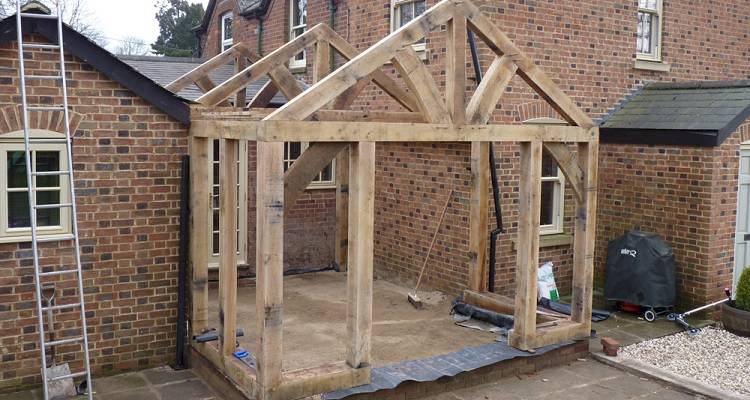
Vertical Panel Frame
Vertical panel frame methods are the most commonly used process for constructing smaller timber frame structures such as home extensions and garden outbuildings. The process involves the erection of vertical timbers to create the supporting structure of the build. These timbers will form the panels of the internal support, fixing together to create the sub-structure.
The advantage of using this method is that the panel assembly is straightforward, reducing the requirement of skilled labour.
There is also increased speed in construction in comparison to alternative building processes, reducing labour time and costs.
Volumetric
Volumetric modular units are construction elements that can be combined to form a whole building without the need for an additional supporting sub-structure. Often these components are manufactured off-site, either in a factory or workshop and transferred to the construction site for installation.
The advantages of volumetric construction are the reduction in waste, both on-site and off-site. The interconnecting elements are created in a controlled environment, improving the control of quality and precision.
The down-side to volumetric construction is the difficulty associated with transferring components, particularly with more substantial buildings.
Hiring a Timber Frame Extension Specialist Checklist
- Research and make an appointment with a qualified and experienced architect or designer to develop the initial plans for your extension.
- Enquire about the costs of their services and consider them when budgeting for your project.
- Research local building regulations and educate yourself on the requirements for planning permission.
- Contact your local authorities for more information and gain an understanding of what regulation will apply to you.
- Search for reputable, qualified tradespeople who will work on your project either alongside you or ultimately construct the build for you.
- We advise you to obtain at least three quotes from various traders to ensure you are receiving the best price.
- Ensure that your build is following the appropriate building and fire regulations along with planning permission if applicable.
- Never pay the full amount upfront and always as for confirmation of any transactions in writing.
- Discuss your options for internal and external materials and methods of construction.
FAQs
Are timber frame extensions cheaper?
What's the cheapest house extension?
How can I moderate the temperature of my conservatory?
Will I need planning permission for a timber frame extension?
Can I have a timber extension instead of brick?
Will a timer frame extension rot?
Sources
https://www.realhomes.com/advice/how-to-add-a-timber-frame-extension
https://www.homebuilding.co.uk/timber-frame-extensions-guide/




